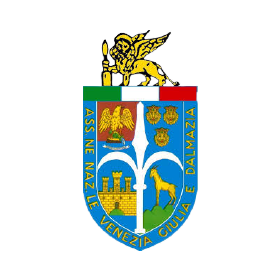San Marino and San Leo
Two exhibits illustrate the fruitful, historical-artistic relationship between Dalmatia and Romagna, The two shores of the Adriatic
Last September 6th, the supplement “Viaggi” (“Voyages”) of the newspaper “La Repubblica” proposed two exhibits of interest, organized in the church of Saint Francis in San Marino and in the museum of sacred art in San Leo: both illustrate the ancient and fruitful relationships between the two shores of the Adriatic, in religious as well as historical and artistic dimensions. We publish here the entire section devoted to these exhibits, as it reflects their set-up and focus, namely the relationship between the regions of the Italian peninsula and the shores of the eastern Adriatic.
In the same period of history that saw Diocletian give Rome its most famous and imposing thermal baths, Marino and Leone, two stone-masons persecuted by the emperor because of their Christian faith, left their native island of Arbe in Dalmatia to become hermits in the Rimini hinterland. Until November 11th, two exhibits in the towns named after these saints will show to all how, in the Late Middle Ages and the Renaissance, the sea between Romagna and Dalmatia was more popular ad busy than those thermal baths made by Diocletian and capable of hosting up to three thousand people, and how fruitful it was in terms of its contribution to art history. The museum of Sacred Art in San Leo, and the church of Saint Francis in San Marino, are working together to narrate the centuries-spanning link between the two shores of the Adriatic. The title is “Art for the Sea: Dalmatia, Titan and Montefeltro among early Christendom and the Renaissance”.
The story begins in the ancient “Palazzo Medici” of San Leo and relies on witnesses from the early age of Christendom, with sacred artefacts (marble parapets, pillar capitals, reliquaries, fragments of ciboria) and objects for daily use coming mainly from Ariminum (ancient Rimini) and Salona, the largest Roman city in Dalmatia. To illustrate the period spanning from the 1200s to the Renaissance, the museum of Saint Francis, in the heart of San Marino, can count on a vast collection of documents (Byzantine images, crucifixes, images of Our Lady and portraits commissioned by the Franciscans, masterpieces by Paolo the Venetian and his disciples, and altar screens, but also embroidery and jewelry typically found in Eastern art.)
The path described by the two museums can be followed in the open air, along the narrow roads which lead from San Leo and continue up to the Cathedral and the romanic parish church.
Napoleone Scrugli




